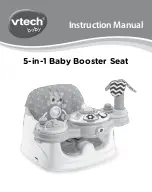
REAR DERAILLEUR - Rev. 00/ 09-2020
CAMPAGNOLO COMPONENTS - TECHNICAL MANUAL
11
5 - MAINTENANCE OF THE REAR DERAILLEUR
• The duration of the components is variable based on the conditions of use, frequency and quality of maintenance. For pro-
per component maintenance, it is necessary to frequently perform the cleaning and lubrication operations, especially under
conditions of heavy use (e.g. each time after washing the bicycle, after use in wet conditions, on dusty or muddy roads etc.).
Lubricant residues on the rims, brake shoes, discs and brake pads can decrease or nullify your
bicycle’s braking capacity, and can lead to accidents, physical injuries, or even death.
WARNING!
• Dirt seriously damages the bicycle and its components. Wash, clean and dry your bicycle carefully after use.
• Never spray your bicycle with water under pressure. Pressurized water, even form the nozzle of a small garden hose, can pass
under seals and enter your Campagnolo components, thereby affecting its operation.
Wash your bicycle and Campagnolo components by wiping them down with water and neutral soap.
• Lubricate all the joints regularly.
• If the rollers do not rotate smoothly, clean throughly and replace if necessary.
• To remove the rollers, unscrew the screws (Fig. 1) with a 3 mm Allen screw.
Comply with the following specifications when
replacing the pulleys:
TIGHTENING TORQUE:
2,7 Nm (24 in.lbs)
• Before lubricating, carefully clean the drivetrain (system, sprocket pack, chainrings and rear derailleur wheels) with a brush or cloth
soaked in a specific degreaser/detergent. In the case of dust or mud, remove any residuals with specific plastic tools.
• Dry the drivetrain with a soft cloth: never use abrasive sponges or metal scouring pads.
• Carefully lubricate the components, using a specific lubricant.
• After application, turn the hand cranks using all the possible gear combinations in order to properly lubricate the entire drivetrain.
• Carefully clean any remaining lubricant remaining on the bicycle or the floor.
The two rollers are different: on the upper sec
-
tion, fit the roller (Fig. 1) marked “UPPER” (with
side play); in the lower section, fit the roller (Fig.
1) marked “LOWER”.
WARNING!
2,7 Nm
(24 in.lbs)
For cleaning the bicycle only use environmentally-friendly and neutral products without caustic sub-
stances and safe to use for you and for the environment.
!






























